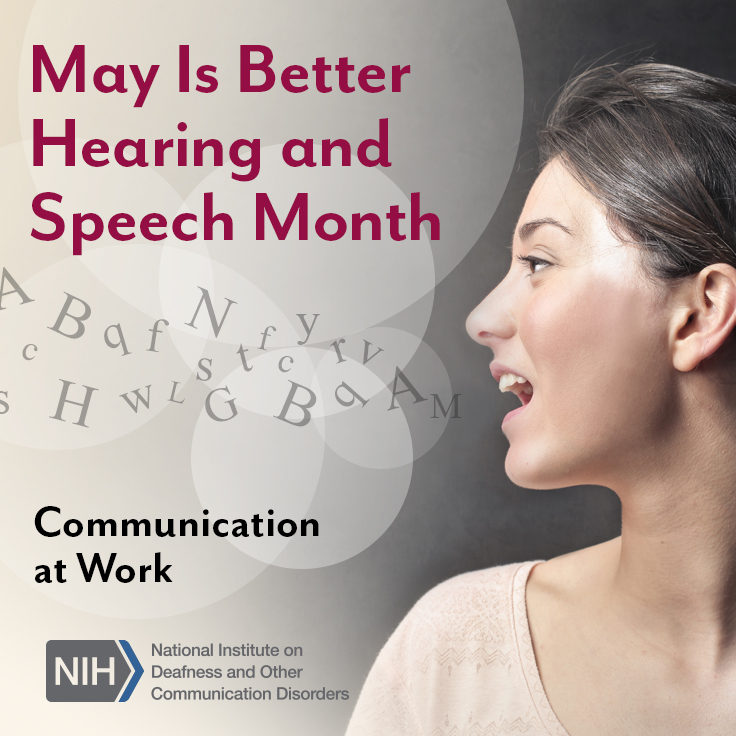
Click on the image or on this link-sharing page to use our social media sharing tools or embed the image in your website or blog. A Spanish-language version of this image is also available.
At least 20 percent of U.S. adults, at some point in their lives, experience significant difficulty in hearing, balance, taste, smell, voice, speech, or language—the research areas of the National Institute on Deafness and Other Communication Disorders (NIDCD). These challenges can compromise physical and emotional health and affect the social, educational, vocational, and recreational aspects of life.
To raise awareness about disorders related to hearing, voice, speech, or language, the NIDCD joins the American Speech-Language-Hearing Association (ASHA) and other organizations in observing Better Hearing and Speech Month each May. This year’s Better Hearing and Speech Month theme is "Communication Across the Lifespan."
Hearing loss and other communication disorders can affect people at any age. For example, hearing loss can be present at birth or develop over time, and voice, speech, or language disorders can affect many, including children with autism spectrum disorder, people who stutter, and adults who use their voices a lot in their jobs, such as teachers and performers. The NIDCD supports a wide range of research to help develop effective diagnostic and treatment strategies relevant to communication throughout the lifespan.
Hearing loss and voice, speech, and language disorders can be particularly challenging for young children and older adults. Hearing problems in children, for example, can delay the development of voice, speech, and language skills, and children with developmental speech and language problems are at risk for learning disabilities and for psychosocial problems that emerge during adolescence or adulthood. The NIDCD provides information and a checklist on hearing and communicative development to help parents determine if their baby has a hearing problem or has speech or language delays. Early intervention can be key to helping children with communication disorders reach their full potential.
Some communication disorders are associated with other conditions; for example, aphasia, a disorder affecting the ability to speak, write, and understand language, results from brain damage, most often due to a stroke. Although people of any age can acquire aphasia, the disorder most commonly affects adults middle-aged and older.
One of the most common communication disorders in older adults is hearing loss, affecting approximately one in three adults ages 65 to 74, and nearly half of those older than 75. Hearing loss can lead to feelings of isolation and loss of connection from family, friends, and the community. Although hearing aids and other assistive devices can improve quality of life, only about one in four adults (age 20 and over) who could benefit from hearing aids has ever used them.
To address this public health issue, the NIDCD supports research initiatives to help make hearing health care more accessible and affordable. The NIDCD encourages those who think they may have hearing loss to check their hearing and seek advice from a health care professional.
The NIDCD also provides science-based health information on a wide range of communication disorders. This May, we encourage you to share our Better Hearing and Speech Month shareable image (also available in a Spanish-language version). If you manage a website or blog, you can syndicate NIDCD content to raise awareness about treatments and current research that can help improve the lives of the millions of Americans living with these disorders.
Select NIDCD resources on communication disorders:
- Age-Related Hearing Loss
- Aphasia
- Autism Spectrum Disorder: Communication Problems in Children
- It's a Noisy Planet. Protect Their Hearing.®
- Journey of Sound to the Brain (video)
- Specific Language Impairment
- Speech and Language Developmental Milestones
- Stuttering
- Your Baby’s Hearing and Communicative Development Checklist

